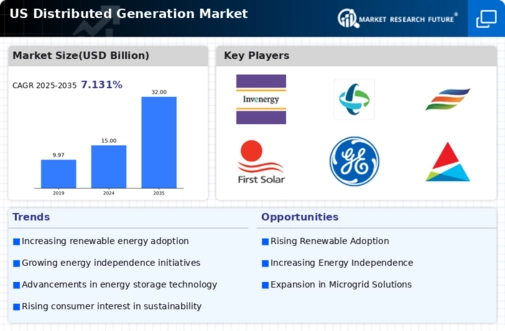The US Distributed Generation Market has become increasingly competitive as various stakeholders recognize the potential for localized energy production as a sustainable alternative to traditional grid systems. This market encompasses various technologies, including solar photovoltaics, wind energy, and energy storage solutions that enable consumers to generate their own electricity and manage energy use on their terms. The rising emphasis on environmental sustainability, coupled with technological advancements and favorable policies, has spurred market growth. As a result, numerous players are entering the market, leading to innovation, strategic partnerships, and price competition.
Companies within this sector must navigate regulatory frameworks, shifting consumer preferences, and the evolving technological landscape to secure a competitive advantage.AES Corporation has established a strong presence in the US Distributed Generation Market by focusing on delivering innovative energy solutions that emphasize sustainability and efficiency. With a significant investment in renewable energy projects, AES Corporation has successfully built a robust portfolio of distributed energy resources, particularly in solar and energy storage technologies.
Their strengths lie in their commitment to developing comprehensive solutions that not only provide clean energy but also improve energy reliability and resilience for customers. By leveraging advanced technologies and extensive operational experience, AES Corporation effectively addresses the rising demand for distributed generation. The company continues to expand its capabilities through partnerships and collaborations in the industry, enabling them to maintain a competitive edge in a fast-evolving market.Invenergy has positioned itself as a key player in the US Distributed Generation Market by focusing on the development and operation of renewable energy and energy storage projects.
The company's portfolio includes wind and solar power generation facilities, enabling them to cater to the increasing demand for clean energy solutions.
Invenergy emphasizes innovation, sustainability, and the integration of cutting-edge technologies to optimize their operations and enhance the performance of their power plants. The company has also made significant strides in mergers and acquisitions, helping to expand its market presence and diversify its energy offerings. With robust financial resources and a strong commitment to sustainable practices, Invenergy stands out in the US market by not only addressing the needs of its customers but also contributing significantly to the transition to a clean energy future across various segments within the distributed generation space.




















